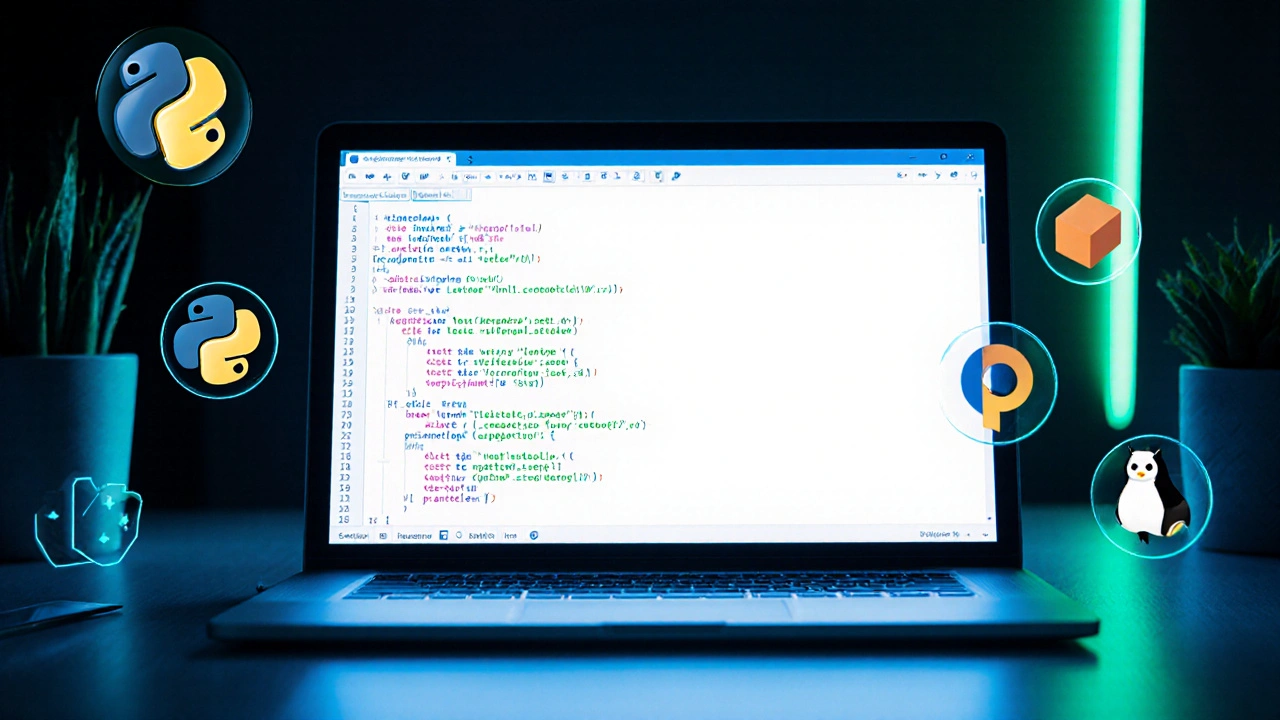Python machine learning: practical path to real projects
Most real-world machine learning work today runs on Python. If you want results fast, focus on a few tools, a clear practice plan, and small projects you can finish. This page gives a compact, useful route from zero to a working ML project you can show employers or use in your own work.
Quick setup and first projects
Start simple: install Python 3.10+, then set up a virtual environment. Use conda or venv so dependencies don’t clash. Install these packages first: numpy, pandas, scikit-learn, matplotlib, and jupyterlab. Once you’re comfortable, add TensorFlow or PyTorch depending on whether you want deep learning.
Pick two starter projects that teach different skills. For structured data, try the Titanic survival classification or the Iris flower classifier. Both live on Kaggle and let you practice data cleaning, feature selection, model training, and basic evaluation. For image work, try MNIST or a small binary classifier using transfer learning with a pre-trained model in TensorFlow or PyTorch. Finish each project with a short README and a notebook that runs from top to bottom without manual fixes.
Keep iterations short. Train a simple model first—like logistic regression or a small decision tree—so you learn the pipeline. Then swap in a stronger model and compare. Track metrics like accuracy, precision, recall, and a confusion matrix. These steps teach you how to judge whether a model actually improved.
Common pitfalls and real tips
Don’t skip data cleaning. Missing values, mislabeled rows, and wrong types are the top reasons models fail. Use pandas to inspect distributions and spot outliers. Use simple visual checks—histograms and scatter plots—before moving to fancy features.
Watch for data leakage: never use information in training that won’t be available at prediction time. A common example is including future timestamps or aggregated labels when you split train and test. Always split data first, then apply scaling or feature creation inside a pipeline so the test set stays pure.
Learn to evaluate properly. Use cross-validation for small datasets, and prefer metrics that match the problem—F1 for imbalanced classes, mean absolute error for regression if outliers matter. Logging experiments with a small tool or even a spreadsheet helps you see what actually changed.
Build a small portfolio: three cleaned notebooks, a short blog post describing one project, and a GitHub repo with instructions. Employers look for projects you can explain in five minutes. If you want inspiration, our site has guides like “Python and AI” and hands-on tutorials that align with this plan.
Final practical move: join a short Kaggle competition or replicate a paper’s results on a small dataset. Real feedback and deadlines change how you learn more than extra theory. Keep projects small, track versions, and focus on finishing so every attempt teaches something useful.

- Oct 28, 2025
- Mark Cooper
- 0 Comments
Python for AI: Why It’s the Top Choice for Building Intelligent Systems
Python dominates AI development because of its simple syntax, powerful libraries, and massive community. Learn why it's the top choice for machine learning, deep learning, and real-world AI projects.

- Aug 17, 2025
- Andrew Harper
- 0 Comments
How Python Powers AI: Real-World Synergy Explained
See why Python fuels rapid AI growth, with clear examples and actionable tips for beginners and tech pros. Discover practical, real-world synergy now.
